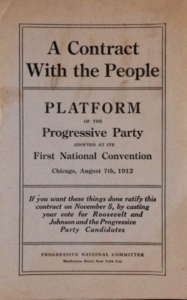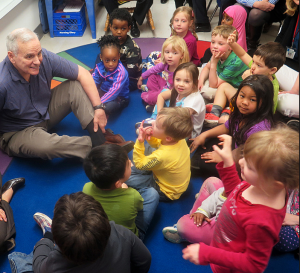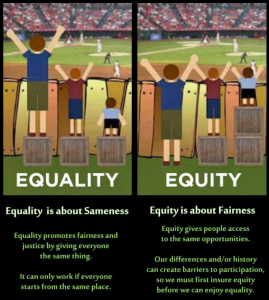 In 2018, progressive Governor Mark Dayton will be retiring, and Minnesota voters will be selecting a new chief executive. To retain control of the Governor’s office in 2018, Minnesota Democrats need a compelling policy agenda. It goes without saying that they also need a compelling candidate, but this discussion is about policy.
In 2018, progressive Governor Mark Dayton will be retiring, and Minnesota voters will be selecting a new chief executive. To retain control of the Governor’s office in 2018, Minnesota Democrats need a compelling policy agenda. It goes without saying that they also need a compelling candidate, but this discussion is about policy.
What constitutes a compelling policy agenda? First, it’s bite-sized. It can be quickly consumed and remembered by casually engaged voters. It’s more like five proposals, not fifty proposals. That doesn’t mean leaders should only do five things as a governor, but it does mean that they should only stress and repeat five-ish policies as a candidate, so that the agenda can be remembered.
Second, a compelling policy agenda delivers relatively bold change. It’s not merely about protection of the status quo from the bad guys, or small incremental improvements (see HRC campaign). It’s aspirational, and not limited to ideas that currently have the necessary votes to pass. If a candidate has to scale it back after elected, so be it. But they should run with a bold vision.
Third, a compelling policy agenda needs to have popular support beyond the political base. After all, a campaign agenda is about winning votes.
Fourth, it’s is easy to understand. Few have the time or inclination to study the intricacies of a 15-point tax reform plan, so candidates should stick to things that most can easily grasp and embrace.
Finally, a compelling policy agenda must be directed at Minnesota’s most pressing problems. It shouldn’t merely be about kowtowing to the most powerful interest groups, as is so often the case. It must actually be about the problems that most need fixing.
What fits those criteria? In no particular order, here’s my recommendation for a progressive gubernatorial candidate’s agenda.
- MinnesotaCare for All Option. Allow all Minnesotans to buy into the MinnesotaCare public health insurance program. This will put competitive pressure on private insurance companies to keep premiums down, and ensure Minnesotans will always have a coverage option, even if health plans pull out of the market.
- Transportation Jobs Fund. Increase the gas tax by a nickel per gallon — one penny per gallon per year over five years — and put the proceeds into an untouchable fund that will put Minnesotans to work improving the state’s roads, bridges and transit system. This will lift up the portion of the workforce that is struggling the most, and ensure Minnesota has a competitive economy and quality-of-life into the future.
- Achievement Gap Prevention Plan. Ensure every child under age five has access to a high quality early learning program, starting with the children who can’t afford those programs on their own. This will prevent low-income children from falling into Minnesota’s worst-in-the-nation achievement gaps, gaps that opens before age two, lead to lifelong inequity and pose a grave threat to our economic competitiveness.
- Fair Share Tax. Create a new, higher tax bracket for the wealthiest 10% of Minnesotans. During a time when income inequality is the worst it has been since just prior to the Great Depression (1928), the wealthiest Minnesotans are paying a lower share of their income in state and local taxes. Adjusting the state income tax is the best way to remedy that disparity.
- Super-sized Rainy Day Fund. Increase the size of the state’s rainy day fund by 25%. This will control taxpayers’ borrowing costs and help keep Minnesota stable in the face of 1) an economy that, after the longest period of economic expansion in history, may be due for a downturn and 2) a federal government that is threatening to shift many fiscal burdens to states. Bolstering the rainy day fund will also communicate to moderate voters that a progressive will be a level-headed manager of their tax dollars.
Yes, worthy issues are left off this agenda. But we’ve seen time and again that when Democrats try to communicate about everything, they effectively communicate about nothing. Long, complex “laundry list” policy agendas may please the interest groups who are constantly lobbying the candidates and their staffs, but they are simply too much for busy voters to absorb. As legendary ad man David Ogilvy preached, “the essence of strategy is sacrifice.” To be heard, many things must be left unsaid.
This kind of progressive gubernatorial policy agenda would be simple enough to be understood and remembered, but not simplistic. It would be relatively bold and visionary, but not pie-in-the-sky. It would be progressive, but swing voter-friendly.
This agenda would put Republican opponents in a political bind, because these progressive proposals are popular with moderate swing voters. The partial exception is the Transportation Jobs Fund, where swing voters are conflicted. Surveys tell us that gas taxes are somewhat unpopular, particularly in exurban and rural areas, but the transportation improvements that would be funded by the higher gas tax are very popular with voters of all political stripes, as are jobs programs. On that front, one key is to guarantee that tax proceeds could only be spent on improvements, something many skeptical voters seem to doubt.
If such an agenda were sufficiently repeated and stressed by a disciplined candidate, fewer Minnesotans would be lamenting that they “have no idea what Democrats stand for.” Most importantly, this agenda also would go a long ways toward fixing some of Minnesota’s most pressing problems.

 Governor Dayton has been very clear that early education investment is his Administration’s top priority. But you’d never know it by looking at the budget proposals coming out of the Minnesota Legislature so far this year.
Governor Dayton has been very clear that early education investment is his Administration’s top priority. But you’d never know it by looking at the budget proposals coming out of the Minnesota Legislature so far this year. We also know that research shows that education achievement gaps can be measured in children as young as
We also know that research shows that education achievement gaps can be measured in children as young as